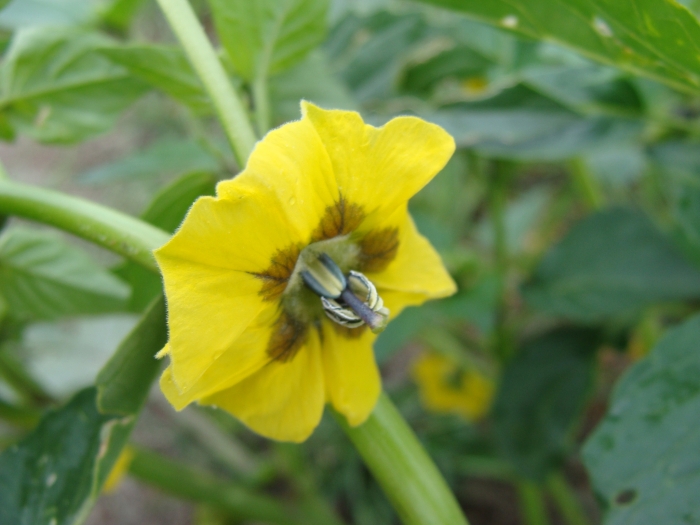Tomatillo
(Physalis philadelphica)
Tomatillo (Physalis philadelphica)
/
/

Alexis López Hernández
CC BY 4.0
Image By:
Alexis López Hernández
Recorded By:
Copyright:
CC BY 4.0
Copyright Notice:
Photo by: Alexis López Hernández | License Type: CC BY 4.0 | License URL: http://creativecommons.org/licenses/by/4.0/ | Rights Holder: Alexis López Hernández | Publisher: iNaturalist | Date Created: 2020-08-02T14:58:42-07:00 |

























Estimated Native Range
Summary
Physalis philadelphica, commonly known as the tomatillo or Mexican husk tomato, is a perennial herb native to a range of environments in Central America and Mexico, including the highlands, agricultural land, and disturbed areas. It is particularly prevalent in the Mexican states of Hidalgo and Morelos, as well as the highlands of Guatemala. The tomatillo can grow up to 5 to 7 feet tall and produces small, spherical, green or green-purple fruits encased in a papery husk, which are notable for their culinary uses. The plant has a bushy habit and bears small yellow flowers that typically bloom from May to October, depending on the local climate.
The tomatillo is valued for its edible fruits, which are a staple in Mexican cuisine and are used to make salsa verde and other dishes. It is also grown for ornamental purposes due to its attractive lantern-like husks and bright yellow flowers. In cultivation, tomatillos require full sun and warm temperatures, ideally between 25 to 32°C (77 to 89.6°F). They prefer well-drained, sandy, fertile soils with a pH of 5.5 to 7.3. While the plant is relatively easy to grow, it is important to provide adequate space for its sprawling growth habit. Tomatillos are typically started from seed indoors and transplanted after the last frost date. They are self-incompatible, so at least two plants are necessary for fruit production. Potential problems include pests such as the tomato hornworm and diseases like blight and mildew.CC BY-SA 4.0
The tomatillo is valued for its edible fruits, which are a staple in Mexican cuisine and are used to make salsa verde and other dishes. It is also grown for ornamental purposes due to its attractive lantern-like husks and bright yellow flowers. In cultivation, tomatillos require full sun and warm temperatures, ideally between 25 to 32°C (77 to 89.6°F). They prefer well-drained, sandy, fertile soils with a pH of 5.5 to 7.3. While the plant is relatively easy to grow, it is important to provide adequate space for its sprawling growth habit. Tomatillos are typically started from seed indoors and transplanted after the last frost date. They are self-incompatible, so at least two plants are necessary for fruit production. Potential problems include pests such as the tomato hornworm and diseases like blight and mildew.CC BY-SA 4.0
Plant Description
- Plant Type: Herb
- Height: 3-4 feet
- Width: 3-4 feet
- Growth Rate: Rapid
- Flower Color: Yellow
- Flowering Season: Summer
- Leaf Retention:
Growth Requirements
- Sun: Full Sun
- Water: Medium
- Drainage: Medium
Common Uses
Border Plant, Edible*Disclaimer: Easyscape's listed plant edibility is for informational use. Always verify the safety and proper identification of any plant before consumption., Low Maintenance, Potted Plant, Street Planting
Natural Habitat
Native to highlands, agricultural land, and disturbed areas in Central America and Mexico
Other Names
Common Names: Tomatillo, Ground Cherry, Large-Flower Tomatillo, Mexican Groundcherry, Tomatillo Ground-Cherry, Mexican Husk Tomato
Scientific Names: , Physalis philadelphica, Physalis megistocarpa,
GBIF Accepted Name: